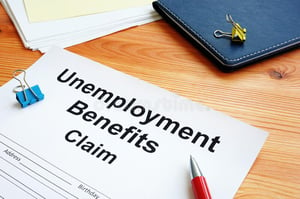
With the U.S. gaining 916,000 jobs in February and the national unemployment rate at 6% compared to the nearly historic high of 14.7% at the peak during the coronavirus pandemic, WalletHub today released updated rankings for the States Whose Unemployment Rates Are Bouncing Back Most, along with accompanying videos and audio files, to illustrate which areas of the country have had the best recovery so far.
In order to identify the states whose unemployment rates are bouncing back most, WalletHub compared the 50 states and the District of Columbia based on five key metrics that compare unemployment rate statistics from the latest month for which we have data (March 2021) to key dates in 2019 and 2020.
Below, you can see highlights from the report, along with a WalletHub Q&A.
| Bounced Back Most | Bounced Back Least |
| 1. Nebraska | 42. Rhode Island |
| 2. Utah | 43. Colorado |
| 3. South Dakota | 44. Texas |
| 4. Alabama | 45. New Jersey |
| 5. Vermont | 46. Nevada |
| 6. Kansas | 47. New Mexico |
| 7. Montana | 48. California |
| 8. Idaho | 49. Connecticut |
| 9. New Hampshire | 50. New York |
| 10. Iowa | 51. Hawaii |
To view the full report and your state’s rank, please visit: https://wallethub.com/edu/states-unemployment-rates/74907/
WalletHub Q&A
How should we respond to the fact that unemployment for recent graduates is significantly higher than the overall unemployment rate?
“The best way to respond to the high unemployment rate for recent graduates is to make sure as many people as possible get the COVID-19 vaccine. The more people who are vaccinated, the faster the country can reopen and the more job openings there will be. Some of the industries most impacted by the pandemic, like retail and hospitality, are where many people get their first jobs, so reopening those industries to full capacity should help graduates,” said Jill Gonzalez, WalletHub analyst. “Since companies are likely to choose candidates with more experience before those who only just graduated, the way to solve that problem is by creating enough job openings that they cannot all be filled by experienced workers.”
How might President Biden's April 19 deadline to make the vaccine available to all adults impact unemployment?
“President Biden’s April 19 deadline for making the vaccine available to all adults should have a very positive impact on unemployment, as businesses will be able to vaccinate all of their employees and some may limit in-person shopping to vaccinated customers. State governments will roll back capacity limits on businesses as a result, giving businesses both the need to hire more and the increased revenue to complete that hiring,” said Jill Gonzalez, WalletHub analyst. “If people know that almost everyone will be vaccinated when they walk into a business, they will get a morale boost and consumer confidence will increase, resulting in more business revenue.”
Is there a big difference in the unemployment rate among various demographics?
“The unemployment rate does differ sharply among different demographics. The unemployment rate for white people is 5.5%, while it’s much higher, at 9.9%, for black people. The racial disparity is troubling, especially in the context of broader discussions of inequality that have taken place in the past year,” said Jill Gonzalez, WalletHub analyst. “The unemployment rate can fluctuate a lot by age, too; it’s only 4.5% for those ages 45 to 54, but 10.3% for people ages 20 to 24. It makes sense that people who have been in the workforce longer would have more job stability, but we should be concerned about the difficult conditions faced by young people.”
Which state has experienced the biggest increase in unemployment vs. the beginning of 2020?
“Hawaii has experienced the biggest increase in unemployment because the number of unemployed persons jumped by 301% from January 2020 to March 2021, compared to the average increase of 43%,” said Jill Gonzalez, WalletHub analyst. “Hawaii’s overall unemployment rate is 8.6%, compared to the average of 6.0%.”
Which state has experienced the biggest decrease in unemployment vs. the beginning of 2020?
“Nebraska has experienced the biggest decrease in unemployment because it has seen a 15% decrease in the number of unemployed persons from January 2020 to March 2021, compared to the average increase of 43%,” said Jill Gonzalez, WalletHub analyst. “Nebraska’s overall unemployment rate is 2.8%, compared to the average of 6.0%.”












